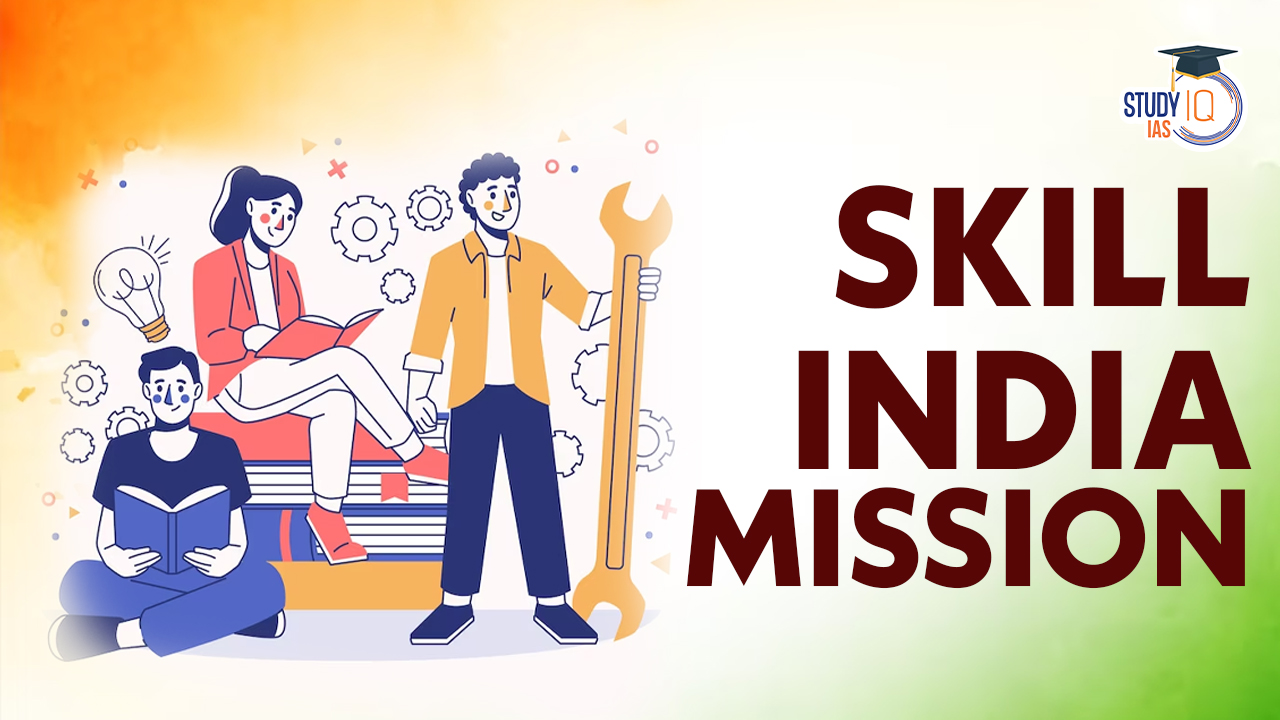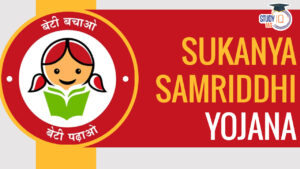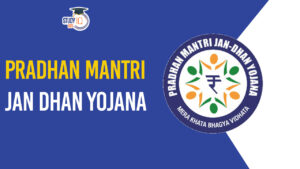Table of Contents
Skill India Mission
In a rapidly changing global economy, equipping the workforce with the right skills is imperative for any nation’s growth and development. The Skill India Mission is an ambitious initiative launched by the Government of India in 2015 to empower the country’s workforce with the skills necessary to enhance employability, bridge the skills gap, and drive economic growth.
The primary goal of the Skill India Mission is to provide vocational training and skill development opportunities to a significant portion of India’s population, mainly focusing on its large youth demographic. In this article, we will delve into the details of the Skill India Mission, its objectives, achievements, and its impact on the country’s workforce.
Skill India Mission Scheme Overview
Skill India, a Government of India initiative, aims to empower youth with job-ready skills, enhancing employability and economic growth. The National Skill Development Mission, chaired by the Prime Minister, oversees this effort. It is a kind of umbrella scheme.
Skill India offers courses in 40 sectors aligned with industry and government standards. These courses focus on practical skills, reducing the need for on-the-job training.
The Ministry for Skill Development & Entrepreneurship (MSDE) was established, focusing on skill development and creating a skilled workforce. Programs like Pradhan Mantri Kaushal Vikas Yojana (PMKVY) and Pradhan Mantri Yuva Yojana (PM-YUVA) have trained millions of individuals.
MSDE also introduced reforms to the Apprentices Act, encouraging industry involvement in apprenticeship programs. The National Apprenticeship Promotion Scheme (NAPS) provides financial support for apprenticeships.
Skill India promotes international collaboration and aims to meet global market demands. This initiative aims to create a prosperous and skilled society, benefiting India’s youth and economy.
| Aspect | Description |
| Launch Date | July 15, 2015 |
| Objective | To train and develop industrial and entrepreneurial skills among Indians |
| Target | Train a minimum of 300 million skilled people by 2022 |
| Scope | Involves every segment of Indian society, local and foreign companies, and governments |
| Scale | World’s largest initiative to train manpower in a single country or geographical location |
| Government Involvement | Every ministry of the Central government is involved |
Skill India Mission Objectives
The Skill India Mission has a primary objective of providing market-relevant skills training to over 400 million young individuals in India by the year 2023. This mission seeks to:
- Foster the growth of talents among Indian youth.
- Enhance skill development in established sectors and identify emerging areas for skill development.
- Bridge the gap between industry-required skills and the skills possessed by the workforce to boost employment opportunities.
- Alleviate poverty by enabling individuals to gain meaningful employment.
- Enhance the competitiveness of Indian businesses on a global scale.
- Ensure that skill training is not only relevant but also of high quality.
- Prepare the Indian workforce to compete in the global job market.
- Adapt and expand existing skill development programs to meet contemporary challenges.
- Focus on building practical competencies rather than merely awarding qualifications.
- Create opportunities for continuous lifelong learning and skill development.
- Foster active engagement and collaboration between social partners, while promoting robust public-private partnerships in skill development.
- Mobilize sustainable investments to support skill development initiatives.
Implementation of the Skill India Mission
The implementation of the Skill India Mission is facilitated through a structured institutional framework led by the Ministry of Skill Development and Entrepreneurship (MSDE). This framework is organized into three tiers, each with specific roles and responsibilities:
- Governing Council: This is the highest level of the institutional mechanism and provides policy guidance and strategic direction for the Skill India Mission.
- Steering Committee: The Steering Committee plays a crucial role in overseeing the implementation of the mission and ensuring that it aligns with its objectives and goals.
- Mission Directorate (including an Executive Committee): The Mission Directorate serves as the executive arm of the Skill India Mission, responsible for carrying out the day-to-day operations and activities necessary for achieving its objectives.
Additionally, the Mission Directorate is supported by three key institutions:
- National Skill Development Agency (NSDA): NSDA plays a pivotal role in coordinating and promoting skill development efforts in the country. It helps ensure that skill development initiatives are effectively executed and aligned with national goals.
- National Skill Development Corporation (NSDC): NSDC focuses on providing financial and strategic support to various skill development programs and initiatives. It plays a crucial role in funding and scaling up skill training efforts.
- Directorate General of Training (DGT): DGT is responsible for overseeing and managing the skill development programs related to vocational training and technical education. It helps ensure the quality and relevance of training programs.
Sub-missions of Skill India Mission
The Skill India Mission encompasses seven sub-missions, which serve as the foundational elements for achieving its overarching objectives:
- Institutional Training: This sub-mission focuses on enhancing the capacity of training institutions to deliver high-quality skill training programs.
- Infrastructure: It emphasizes the development and enhancement of skill development infrastructure to support training and education facilities.
- Convergence: Convergence efforts aim to bring together various stakeholders, such as government agencies, industry bodies, and training providers, to collaborate and streamline skill development initiatives.
- Trainers: This sub-mission focuses on improving the quality and availability of skilled trainers and instructors, ensuring they are equipped to deliver effective training.
- Overseas Employment: It aims to facilitate employment opportunities for skilled Indian workers in international markets, enhancing their global employability.
- Sustainable Livelihoods: This sub-mission seeks to create sustainable livelihoods by promoting entrepreneurship, self-employment, and skill-based income generation activities.
- Leveraging Public Infrastructure: It involves utilizing existing public infrastructure and resources to support skill development programs efficiently.
These sub-missions collectively work towards achieving the Skill India Mission’s overarching goals of enhancing employability, fostering skill development, and promoting entrepreneurship among the Indian population.
Skill India Mission Key Schemes
The Skill India Mission encompasses several vital components that address various aspects of skill development:
Pradhan Mantri Kaushal Vikas Yojana (PMKVY)
PMKVY, a flagship program of Skill India, offers short-term skill training and certification to youth across diverse sectors through vocational training centres like Industrial Training Institutes (ITIs). The government covers the entire cost of training and assessment fees, making skill development accessible and affordable for a wide range of Indian youths, including those from diverse socio-economic backgrounds.
Sector Skill Councils (SSC)
These autonomous industry-led bodies, established by the National Skill Development Corporation (NSDC), play a pivotal role in developing occupational standards, qualification bodies, and competency frameworks. They organize programs such as Train the Trainer Programs, skill gap studies, and assessments to certify trainees. Presently, there are 37 operational Sector Skill Councils, each governed by a Governing Council consisting of over 600 corporate representatives.
Recognition of Prior Learning (RPL)
An integral part of PMKVY, RPL allows individuals with prior learning experience or skills to undergo assessments and receive certification for their existing knowledge and competencies. This recognizes and values the skills individuals have acquired through informal means or on-the-job training.
National Skills Qualifications Framework (NSQF)
Managed by the National Skill Development Agency (NSDA) and implemented through the National Skills Qualifications Committee (NSQC), NSQF categorizes qualifications based on skill and knowledge levels. NSQC approves National Occupational Standards (NOSs) and Qualification Packs (QPs), sets accreditation norms, addresses the needs of disadvantaged groups, resolves disputes, and aligns NSQF with international qualification frameworks. NSQF ensures quality assurance in skill development and facilitates global mobility while providing progression pathways for the Indian workforce.
UDAAN
UDAAN is a special initiative designed for Jammu & Kashmir and is implemented through a partnership between Indian corporates, the Ministry of Home Affairs, and NSDC. Its primary goals are to provide skills training and enhance the employability of unemployed youth in the region. UDAAN achieves this by exposing unemployed graduates to opportunities in Corporate India and providing Corporate India with access to the talented pool of individuals in the state.
Skills Acquisition and Knowledge Awareness for Livelihood Promotion (SANKALP)
SANKALP is a scheme supported by a World Bank loan, with the current agreement between the Government of India and the World Bank totalling Rs. 1650 Crore. SANKALP aims to strengthen institutional mechanisms at national and state levels, develop a skilled pool of trainers and assessors, and offer skill training opportunities to disadvantaged sections of society. Disbursement of funds from the World Bank to the Government of India is contingent on the fulfilment of agreed Disbursement Linked Indicators (DLIs).
Achievements of the Skill India Mission
The Skill India Mission has made significant strides in skill development and empowerment. Over the years, it has provided skill training and certifications to approximately 2.5 Crore individuals through partnerships with NSDC, PMKVY, and the establishment of Pradhan Mantri Kaushal Kendras (PMKKs) across every district in India.
PMKVY alone has trained and certified over 1.1 Crore candidates, with its latest iteration, PMKVY 4.0, continuing to offer skill development opportunities. Pradhan Mantri National Apprenticeship Melas (PMNAM) is now introducing local youths to diverse apprenticeship training options.
Moreover, the inclusion of drone training in 116 Government ITIs enhances their capabilities. Specialized initiatives in Northeastern and Left-Wing Extremism (LWE) regions provide support for short-term training programs, and international collaborations with over 11 countries have been established to deploy skilled Indian workers abroad. India’s improved ranking at the WorldSkills Competition 2022 highlights the growing enthusiasm among youth and trainers for skill development.
Additionally, partnerships with the Armed Forces have opened doors for skill development among the Navy, Army, Air Force, and CRPF personnel, further contributing to the mission’s success.
Skill India Mission Challenges
Social and traditional biases pose a significant barrier to the acceptance and advancement of skill-based work, with the misconception that manual labour is inferior. These biases, deeply rooted in historical norms and societal behaviours, must be actively addressed to foster a more inclusive environment for skill development.
Inadequate economic incentives further exacerbate the issue, particularly in micro, small, and medium enterprises, where skilled and unskilled workers are often treated equally. This fails to recognize the value of skill development, discouraging individuals from pursuing and showcasing their skills.
Moreover, a glaring mismatch exists between vocational training programs and the specific requirements of industries. This misalignment perpetuates a paradoxical situation where unemployment persists alongside a shortage of skilled workers, particularly in sectors like infrastructure development and manufacturing.
While grant-based free training programs are essential, they come with limitations, particularly in terms of quality and employability. Students may not fully appreciate the training if it is provided for free, and training providers may prioritize quantity over quality. Therefore, it is imperative to link employability with the quality of training while providing financial support.
Another pressing issue is the shortage of qualified trainers. There is a notable lack of emphasis on developing trainer training programs and defining clear career progression pathways for trainers, resulting in a scarcity of qualified professionals in this field.
Skill India Mission UPSC
The government should collaborate with global industries and individuals to implement initiatives, enhance the professional workforce, and boost employment, aiming to position India as a global skill hub. To harness the demographic advantage, improving basic education quality and creating comparable, measurable indicators are essential. Systematically mapping skill requirements, sharing industry data, and conducting labour market assessments for future job trends are crucial steps.
Addressing underutilized funds and high dropout rates is vital, requiring long-term, result-oriented funding. Upgrading the training infrastructure with gender-balanced certified trainers can attract more women to skill training. India must actively address historical gender inequality and create more job opportunities for women in the next decade.
The Skill India Mission, introduced in 2015, is a comprehensive government initiative encompassing various skilling schemes and programs. Its primary goal is to equip the youth of the nation with essential skill sets, enabling them to secure employment in relevant sectors and enhance overall productivity. This initiative holds significant relevance within the UPSC syllabus as it pertains to government schemes and policies.


 Sukanya Samriddhi Yojana, Features, Elig...
Sukanya Samriddhi Yojana, Features, Elig...
 Poshan Abhiyaan, POSHAN 2.0, Features an...
Poshan Abhiyaan, POSHAN 2.0, Features an...
 10 years of PM Jan Dhan Yojana, Objectiv...
10 years of PM Jan Dhan Yojana, Objectiv...





















